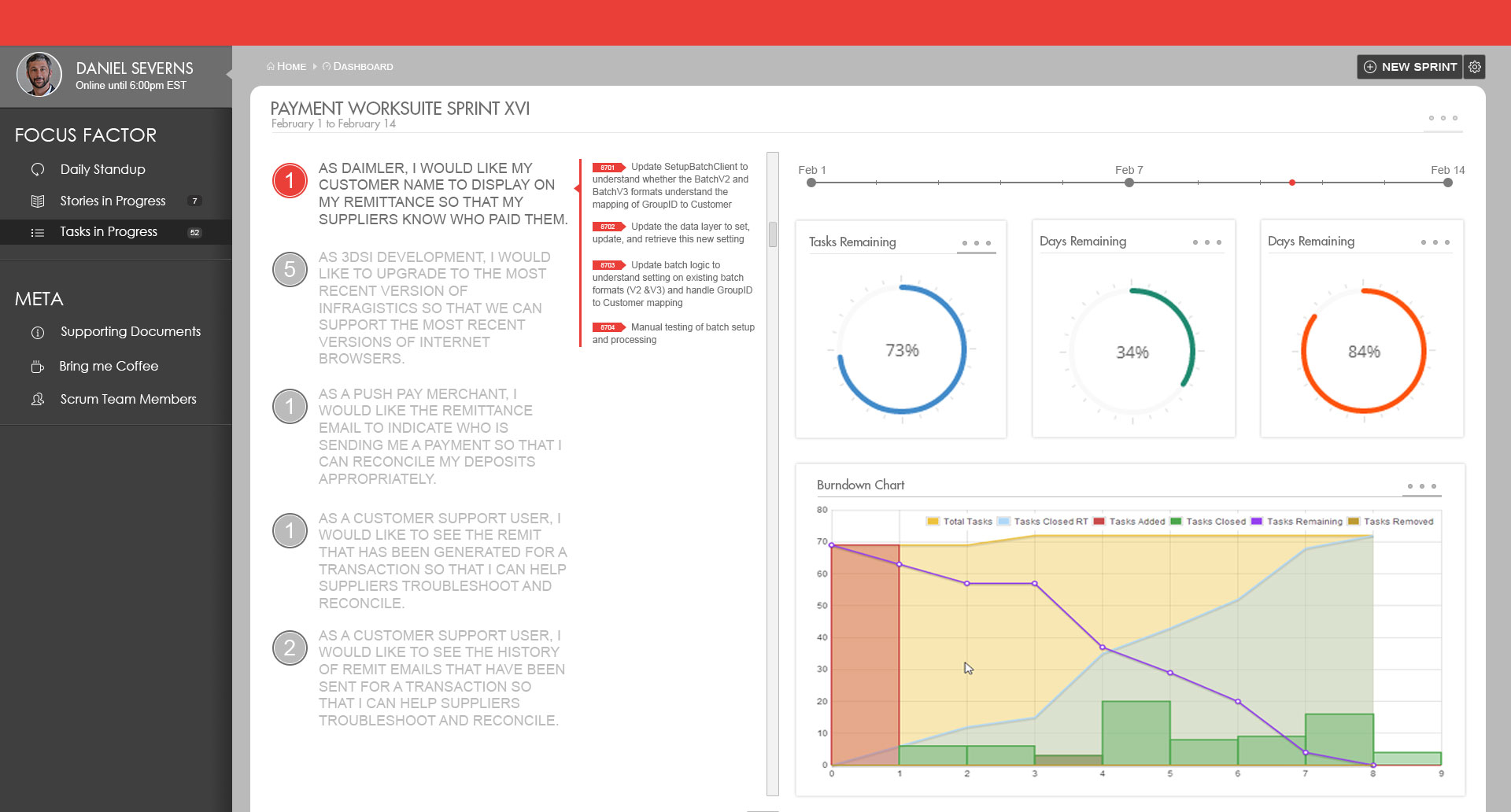So Many Features
Burndown Chart
Get an at-a-glance view of how each sprint is progressing with a burndown chart on your dashboard.
Calendar
Never miss a beat for planning IDD's with your team and our availability calendar.

Scrum Poker
Planning is fun, right? Heck yeah. Now let's play poker! Scrum style.
User Story and Tasks
Improve your team's focus factor by only showing them what they need to see during any stage of a sprint.
What is Scrum?
Baby Steps. Little Bites. One Step at a Time.
Definition of Scrum
Scrum (n): A framework within which people can address complex adaptive problems, while productively and creatively delivering products of the highest possible value.
Scrum is:
- Lightweight
- Simple to understand
- Difficult to master
Scrum is a process framework that has been used to manage complex product development since the early 1990s. Scrum is not a process or a technique for building products; rather, it is a framework within which you can employ various processes and techniques. Scrum makes clear the relative efficacy of your product management and development practices so that you can improve.
The Scrum framework consists of Scrum Teams and their associated roles, events, artifacts, and rules. Each component within the framework serves a specific purpose and is essential to Scrum’s success and usage.
The rules of Scrum bind together the events, roles, and artifacts, governing the relationships and interaction between them. The rules of Scrum are described throughout the body of this document.
Specific tactics for using the Scrum framework vary and are described elsewhere.
Inspection
Scrum users must frequently inspect Scrum artifacts and progress toward a Sprint Goal to detect undesirable variances. Their inspection should not be so frequent that inspection gets in the way of the work. Inspections are most beneficial when diligently performed by skilled inspectors at the point of work.
Adaptation
If an inspector determines that one or more aspects of a process deviate outside acceptable limits, and that the resulting product will be unacceptable, the process or the material being processed must be adjusted. An adjustment must be made as soon as possible to minimize further deviation.
Scrum prescribes four formal events for inspection and adaptation, as described in the Scrum Events section of this document:
- Sprint Planning
- Daily Scrum
- Sprint Review
- Sprint Retrospective